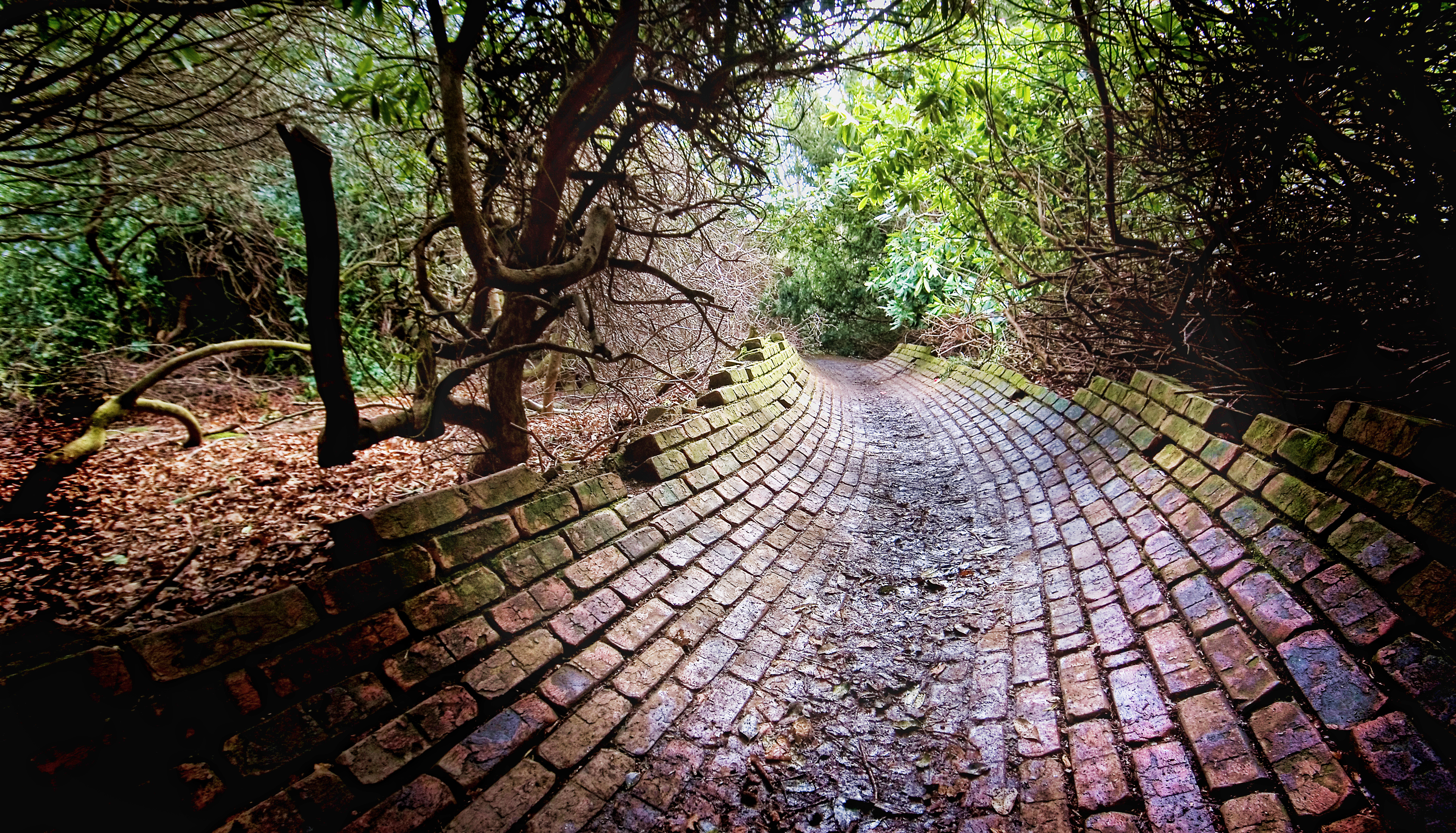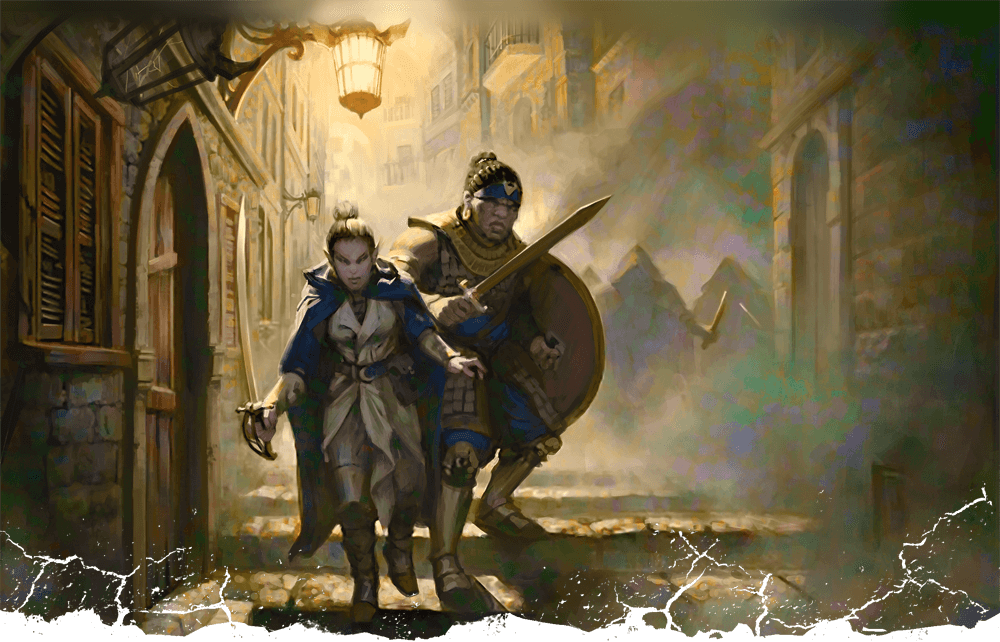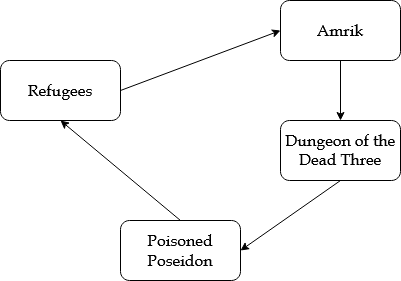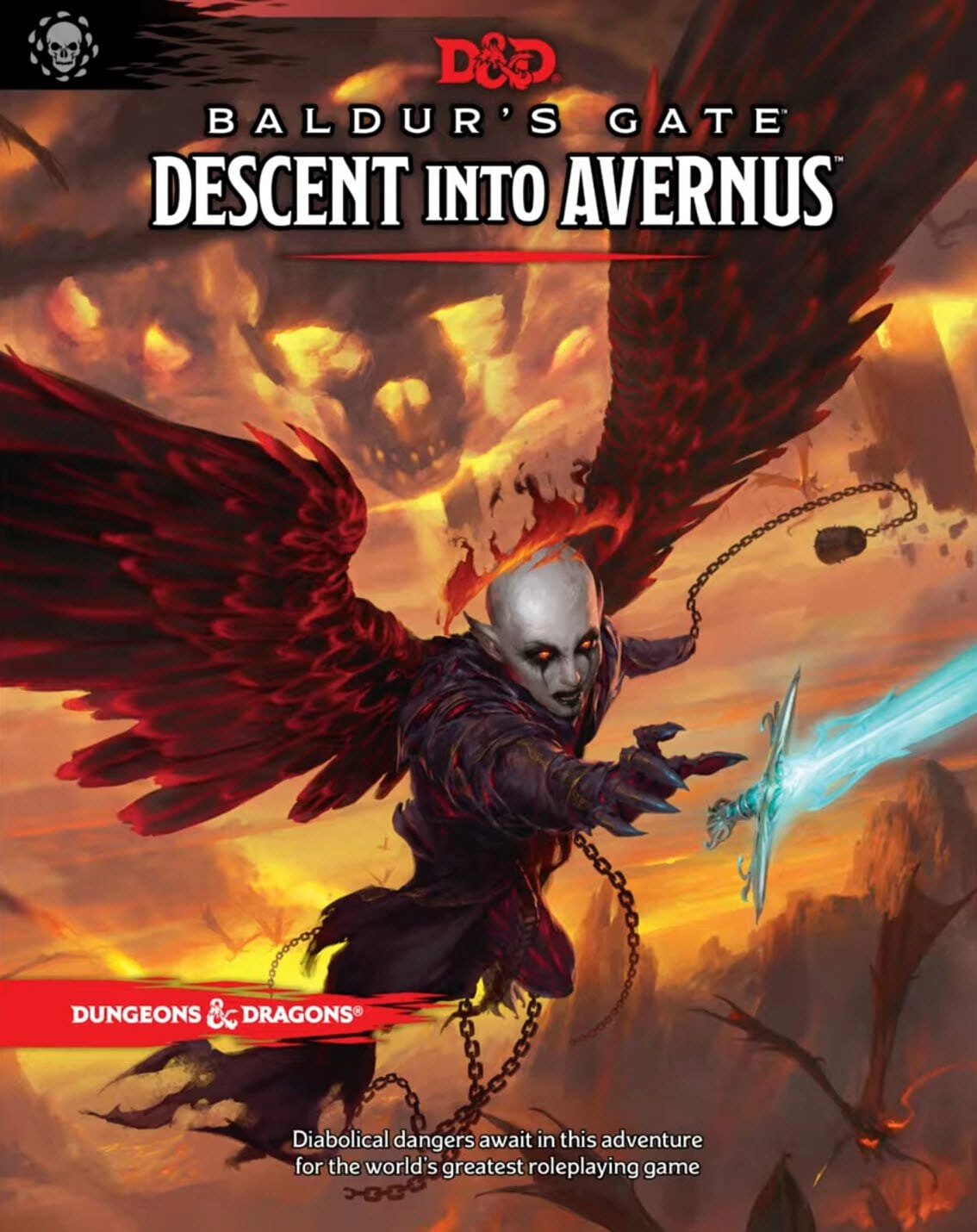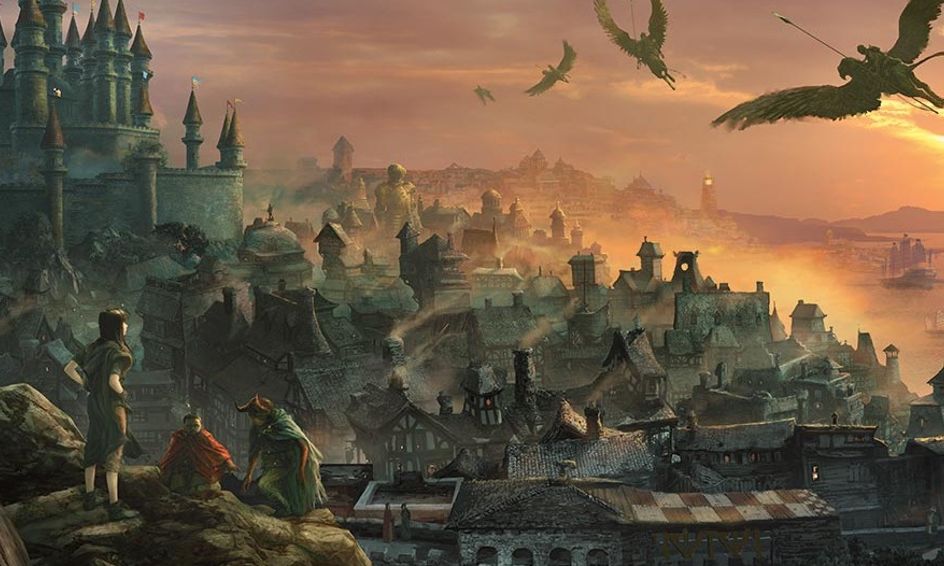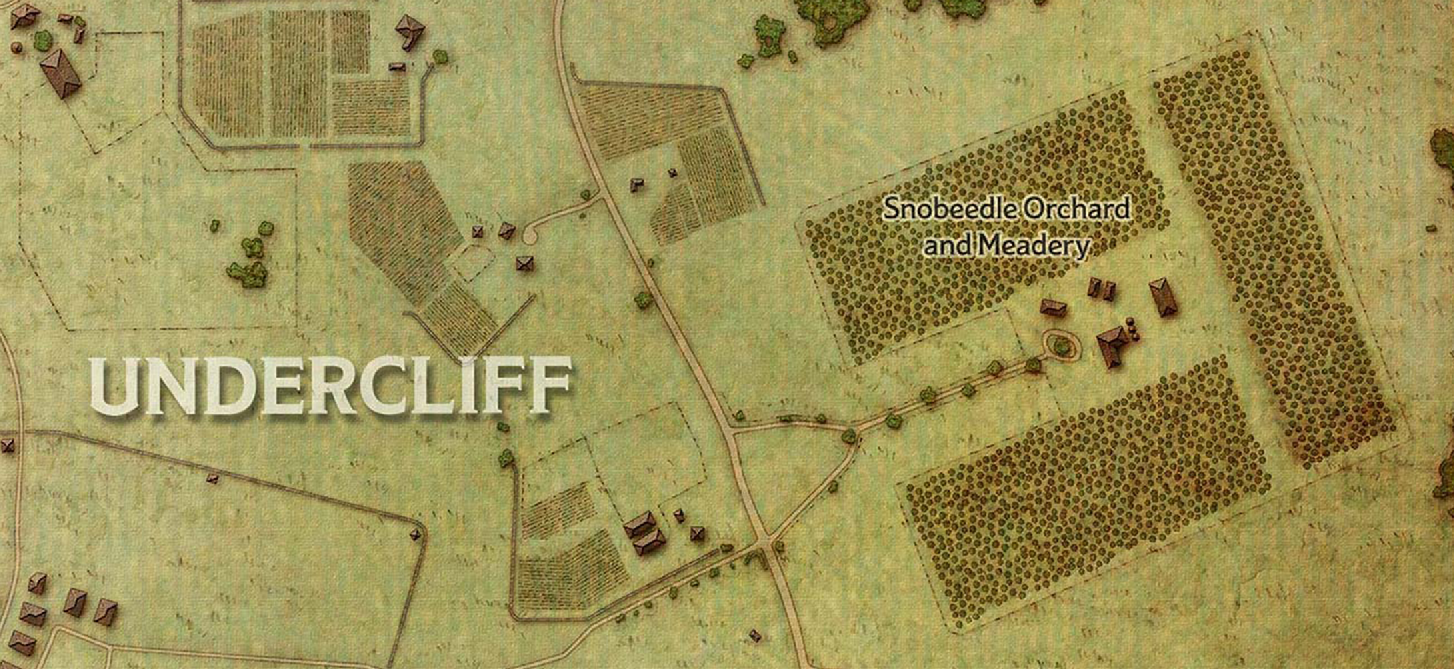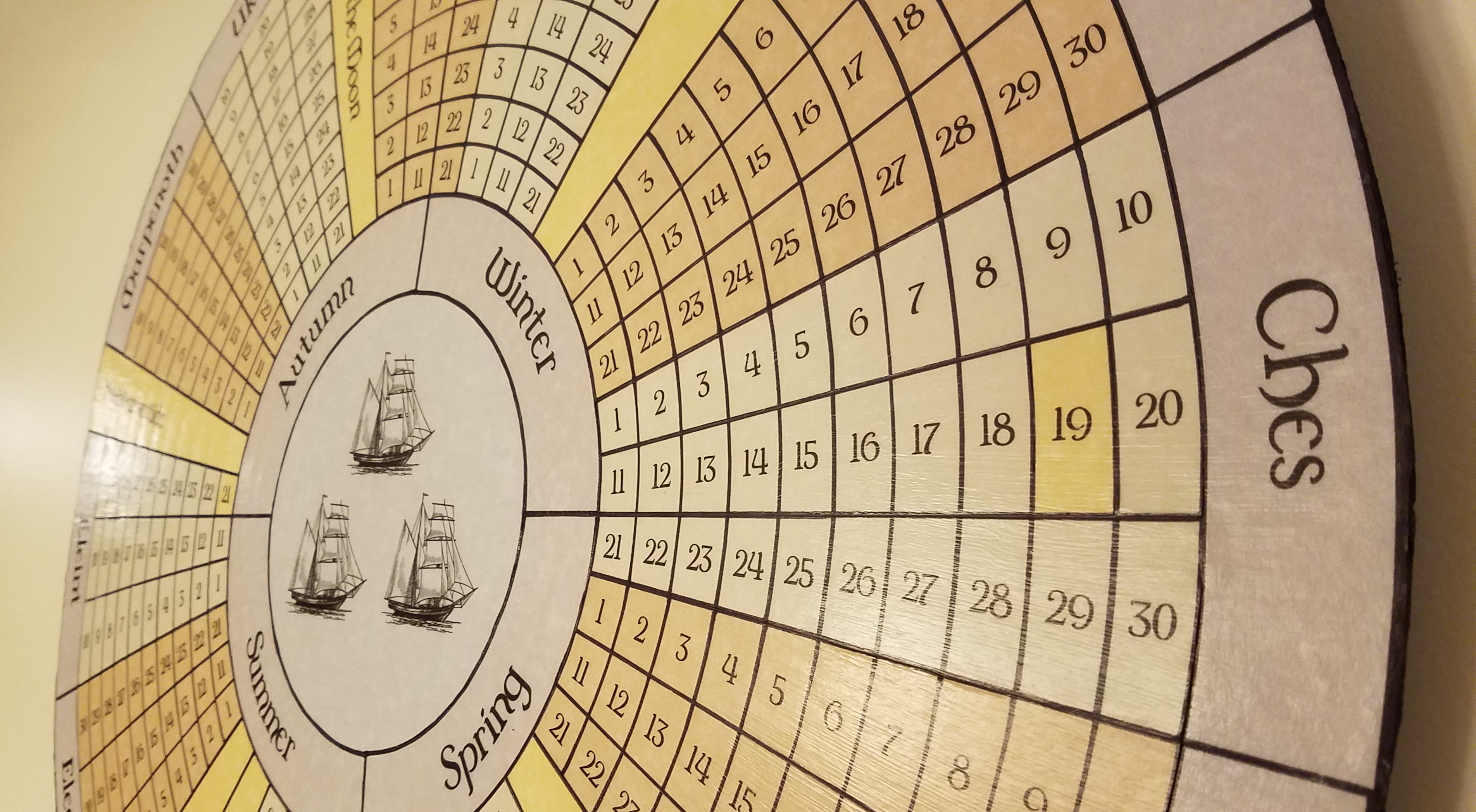Whether the PCs learn of the refugee murders from Flame Zodge or through the alternate hook of the refugees themselves, don’t be surprised if they decide to investigate the murders for themselves. If they’ve been recruited by Zodge, this might happen before they go to the Elfsong Tavern to meet with Tarina. The PCs might also detour to investigate after meeting Tarina but before going to the Poisoned Poseidon. Or they might backtrack and start investigating the bodies after (or during) any of the early Vanthampur nodes (although the rewards for doing so will rapidly taper off).
THE VICTIMS
There have been six victims:
- Edmao Eduarda
- Wemba Oshrat
- Madhuri Akhila
- Leiv Diomidis
- Aneta Diomidis
- Annika Silverleaf
Each body was found in Insight Park. All of them were then taken to Candulhallow’s mortuarium (DIA, p. 187) to be prepared for burial. More details on each victim can be found below in “Canvassing Victims.”
ADDITIONAL VICTIMS: It’s overwhelmingly likely that the PCs will shut down the murder operation out of the Poisoned Poseidon within twenty-four hours of taking the case. If for some reason that doesn’t happen, additional victims will turn up (probably one per day):
- Shohreh Letitia
- Iolanthe Oshrat (sister of Wemba Oshrat, the second victim)
- Valeria Nuska
- Weronika Nuska (sisters)
These victims are most likely to appear if the PCs have somehow gotten lost or confused in their investigation. So use them to aggressively push increasingly obvious clues to the Poisoned Poseidon and Amrik.
Note that, as the scenario begins, Shohreh has already been killed and her body is in the Poisoned Poseidon. Valeria and Weronika are both taken at the same time, but Weronika might still be rescued from the Poisoned Poseidon after Valeria’s body turns up.
If it becomes clear that corpses cannot be safely dumped in Insight Park, the cultists will start dropping them in random locations around the city.
INSIGHT PARK
Insight Park is described on p. 189 of Descent Into Avernus. It takes up a fairly large plot of steep, gullied land that backs up directly onto the wall in the southeast corner of Baldur’s Gate, south of Cliffgate. Forty years ago it was an illegal junkyard, but a druid named Torimesh used magic to cause the rusting piles of refuse to become overgrown by a verdant forest overnight.
At the center of the park is the Drawing Tree, which Torimesh can use to produce prophetic images (see the write-up in the book for details).
Note: The published version of the park is significantly smaller than what I’m describing here. But the map doesn’t really match the description in the book, either.
TIMELINE: See “Candulhallow’s Mortuarium,” below, for a description of the corpses (which, for example, Torimesh would know).
- 10 Days Ago: The first victim, Edmao Eduarda, is found by Torimesh at the foot of the Drawing Tree.
- 8 Days Ago: Wemba Oshrat’s body is found in a clearing up near the wall by a halfling named Marvias Fleecefoot who was out for a morning walk.
- 5 Days Ago: The bodies of Madhuri Akhila and Leiv Diomidis are found Torimesh. They’d been dumped in separate gullies. (Madhuri Akhila was actually dumped the day before, she just wasn’t found until today.)
- 3 Days Ago: A fisherman named Zendreya Vereni who was tying up her boat on the piers near where the park meets the Dock Road spotted the body of Aneta Diomidis (Leiv’s sister) just inside the park boundary.
- 1 Day Ago: Annika Silverleaf’s body was found, once again in front of the Drawing Tree.
You may need to adjust this timeline somewhat depending on how quickly the PCs reach Baldur’s Gate / how long it takes them to get involved. The important detail is that the murders CANNOT start before Elturel’s Fall.
In fact you should adjust this timeline so that the first murder literally happens on the same day as Elturel’s disappearance. (The cultists knew it was coming.) Savvy players will likely pick up on the “coincidence.”
TORIMESH THE DRUID: Torimesh the druid is an elderly man now. He is both furious and heartsick about the bodies being dumped in the park. He’ll rage about the fact that the Flaming Fist has done nothing (“Nothing!”) to put a stop to it.
Torimesh can tell them:
- The timeline and identities of the victims found.
- He’s never seen any of the victims in the park before.
- The bodies were marked with ritualistic carvings he knows to be associated with the Dead Three.
- The corpses were collected by the corpse carts of Candulhallow’s Mortuarium.
He can also act as a guide, taking them to each of the sites where bodies were found.
DRAWING TREE: If the PCs don’t alienate Torimesh, he’ll offer to reveal a prophetic image from the Drawing Tree (see Descent Into Avernus, p. 190). Or, if you want it to feel more portentous, the bark of tree might simply start cracking and peeling back when they draw near.
The resulting image depicts:
- A large sword being held aloft by an angelic figure with feathered wings.
- The arms of the angelic figure are bound with chains.
- Below the figure is a large tablet or slab of some kind that is cracking into two pieces while being consumed by flames.
Note: You could swap this image out for something that would provide a more immediate clue to the murders. (And perhaps if the PCs bring one of the victims’ family members back here and ask Torimesh to do a divination for them, that could happen.) But we’ve got a pretty solid revelation list and it will be more interesting to present a prophecy that evocatively indicates the end of the campaign. See Foreshadowing in RPGs.
SEARCHING THE PARK: There are two clues to be found in Insight Park. You can predetermine which murder scenes they’re located at, put them at the first location (or first two locations) the PCs search, etc. Whatever works. The refugee papers should not belong to Annika Silverleaf or Wemba Oshrat, as their papers can be found at Candulhallow’s Mortuarium.
If you’re predetermining their placement, I recommend NOT putting either clue at the Drawing Tree. You can then put the refugee papers at another location and the tanner’s fluid at two different murder scenes. That gives you a cool interaction with the prophecy at the Drawing Tree, clues at three of the other four locations, and then a fourth location with nothing to be found (giving you a pretty good variety of experience).
CLUE 1 – TANNER’S FLUID: On the ground at or near a murder scene, a PC making a DC 12 Intelligence (Investigation) check can find a strange alchymical substance on the ground (or rubbed up against a tree or whatever).
Intelligence (Arcana) / Wisdom (Medicine)
- DC 12: It’s an alkaline solution of wood ash and lime.
- DC 15: This alcyhmical is often used in tanneries to rotten and loosen the hair of hides.
They can similarly identify the substance and its likely origin by following up with any plausible authority in the city. The nearest tannery to Insight Park is the Poisoned Poseidon.
CLUE 2 – REFUGEE PAPERS: These can be found blown into a bush or thicket near where one of the bodies was found. The papers appear to authorize the refugee to enter and reside in Baldur’s Gate. A DC 15 Wisdom (Perception) test, however, reveals the papers to be forgeries. The forgery can also be detected if the PCs look to verify the origin of the papers (for example, by cross-referencing the refugee lists in the High Hall; or tracking down the official tabularius whose authorizing seal supposedly appears on the papers).
A DC 12 Charisma (Investigation) check can be used to ask questions around town about the forged papers. On a success, the PCs are directed to Amrik Vanthampur at the Low Lantern tavern (see Part 3H: Trafficking Amrik).
STAKING OUT THE PARK: If the PCs decide to stake out the park, they’ll likely spot two Fists of Bane (DIA, p. 232; passive Perception DC 10 to spot them) dumping Shohreh Letitia’s body. They can be either questioned or followed back to the Poisoned Poseidon. (Shohreh could also easily have her refugee papers or a tanner’s fluid stain on her clothing to provide additional or reinforcing clues.)
CANDULHALLOW’S MORTUARIUM
All of the bodies were picked up by corpse carts from Candulhallow’s Mortuarium (see Descent Into Avernus, p. 187) and taken back to their morgue. Since they’re part of an ongoing investigation, gentle repose spells have been used to preserve the corpses in the Candulhallow morgue. The PCs can discover this by asking Zodge, Torimesh (at Insight Park), the victims’ families (who have been notified where their kin are being kept), or just by making general inquiries about where bodies are typically taken. (In the latter case, the PCs might also end up checking Harborside Hospital (p. 189) or the Shrine of Suffering (p. 192).
Option: You could also have the bodies split up among the three different locations, with perhaps the oldest bodies already interred in the Cliffside Cemetery. Any bodies taken to the Shrine of Suffering would have likely been at least partially devoured by the rats in the crypts already.
RITUAL CARVINGS: All of the bodies have been sliced into with a sharp knife or razor. These grisly ritual carvings are primarily in lokharic characters (the alphabet used for the Draconic and various arcane languages), but there are also other pentagrammic sigils and glyph circles suggestive of some terrible, bloody rite. In addition, each victim has a brand at the base of their spine depicting three symbols in a roughly triangular pattern (see graphic).
Intelligence (Arcana/Religion)
- DC 10: The runes are choral praises to dark gods, invoking their right of dominion over all of the mortal plane. “All cities shall fall to darkness,” “that which was foretold in the Prophecies of Blood is upon us,” “the Spawn shall rise from mortal flesh,” “none shall live save those who offer their kin unto the heirs of Jergal,” and that sort of thing.
- DC 15: Although to an untrained eye the symbols would appear to belong to some arcane rite or spell, the arcane components are just nonsense. They don’t really mean anything or do anything, and seem to have been carved for effect rather than purpose.
Intelligence (Religion)
- DC 10: The branded symbols are the holy symbols of Bane, Myrkul, and Bhaal; the three gods who raised themselves to divinity by slaying Jergal, the ancient God of Death.
Wisdom (Medicine) – DC 12: The brands were inflicted post mortem.

TANNER’S FLUID: A DC 12 Intelligence (Investigation) check finds a strange alchymical substance staining the clothes of one of the victims.
Intelligence (Arcana) / Wisdom (Medicine)
- DC 12: It’s an alkaline solution of wood ash and lime.
- DC 15: This alcyhmical is often used in tanneries to rotten and loosen the hair of hides.
They can similarly identify the substance and its likely origin by following up with any likely authority in the city. The nearest tannery to Insight Park is the Poisoned Poseidon.
REFUGEE PAPERS: Annika Silverleaf and Wemba Oshrat’s personal effects include their refugee papers, authorizing them to enter and reside in Baldur’s Gate. A DC 15 Wisdom (Perception) test, however, reveals the papers to be forgeries. The forgery can also be detected if the PCs look to verify the origin of the papers (for example, by cross-referencing the refugee lists in the High Hall; or tracking down the official tabularius whose authorizing seal supposedly appears on the papers).
A DC 12 Charisma (Investigation) check can be used to ask questions around town about the forged papers. On a success, the PCs are directed to Amrik Vanthampur at the Low Lantern tavern (see Part 3H: Trafficking Amrik).
Option: The Baldur’s Gate gazetteer in Descent Into Avernus does an exceptional job of seeding the locations in the city with cool scenario concepts that a DM can quickly expand on. Candulhallow’s is no exception, with the Candulhallows engaged in a variety of necromantic scams, including corpse theft. PCs coming around to ask after specific corpses (that Leylenna Candulhallow may have used to replace more high profile corpses that she’s claimed for her experiements) is an excellent opportunity to accidentally reveal the corruption, and it would be relatively easy to spin this off as a small side quest (albeit with some small risk of becoming a red herring that completely derails the PCs from the main investigation).
CANVASSING VICTIMS
If the PCs backtrack the victims they’ll be able to find friends and/or family who can provide them with background information on the victims. You can prep this material ahead of time, but with the brief biographical sketches and key information summarized below it should be fairly easy to simply improvise the interactions.
Things to think about during these improvisations:
- If they’re refugees, think about the stories that might be told about how they got from Elturel to Baldur’s Gate.
- What’s a notable experience they had as refugees after reaching Baldur’s Gate?
- How were they kidnapped by the Dead Three cultists? Were there witnesses or evidence left behind that could be used to describe the kidnapping? (Actual witnesses should be rare, but could confirm that there were definitely Dead Three cultists involved.)
In addition, there are three key clues that the PCs can acquire here:
- Forged refugee papers pointing back at Amrik. A DC 15 Wisdom (Perception) test, however, reveals the papers to be forgeries. The forgery can also be detected if the PCs look to verify the origin of the papers (for example, by cross-referencing the refugee lists in the High Hall; or tracking down the official tabularius whose authorizing seal supposedly appears on the papers).
- Verbal reports that the victims were smuggled into the city by Amrik.
- A variety of clues indicating that all of the victims were either Elturgadian knights or related to them.
Each victim’s description includes a brief summary of the pertinent clues.
EDMAO EDUARDA: The first victim. Taken from his home ten days ago. Unlike the later victims, Eduarda was a native of Baldur’s Gate. He’s survived by elven wife Neske and his half-elven son Luus.
- Hanging on the wall above Eduarda’s fireplace is the mantle of a Hellrider. It belonged to Norbaer Eduarda, Edmao’s father, who retired to Baldur’s Gate after he married (and before Edmao was born).
WEMBA OSHRAT: Wemba’s sister, Iolanthe, was an apprentice to a wizard name Bèr Nölmien in Elturel. When the crisis began, Bèr used a teleportation circle to evacuate Iolanthe, Wemba, and about a dozen other refugees directly to Baldur’s Gate. Wemba vanished just one day after arriving in Baldur’s Gate and his body was found the next day.
- Iolanthe and Wemba were among the first refugees who got their papers from Amrik. (The gates hadn’t been closed yet, but they still needed proper documentation and Amrik offered to get it for them at a fraction of the price using his “connections at High Hall.”) Iolanthe still has hers; Wemba’s are with his personal effects at Candulhallow’s.
- Iolanthe can also describe the final minutes before Elturel’s Fall. Her master Bèr would have realized that the entire city was being influenced by some incredibly powerful magical field. Notably, they were expecting more people (including Bèr) to follow them. A second circle opened, but then abruptly winked out of existence (Elturel had just been sent to Hell, disrupting the spell). A successful DC 15 Intelligence (Arcana) check might indicate that the spell winking out like that would be consistent with a counterspell, an antimagic field suddenly coming into effect, or one end of the portal being shifted outside the range of the spell.
- Iolanthe and Wemba’s mother is a knight of the Order of the Companion.
MADHURI AKHILA: Madhuri arrived in Baldur’s Gate in the first wave of refugees, catching a ride on a boat heading downstream. He has no other family in the city, but had been bunking with Sjang and Albaer, two other refugees who came in on the same boat. They found the door broken down and Madhuri missing seven days ago.
- Like Iolanthe and Wemba Oshrat, they were among the first refugees to get their papers from Amrik. (The gates weren’t closed yet, but they still needed proper documentation.)
- Madhuri’s paperwork was left behind in the room he shared with Sjang and Albaer. It would turn up if the PCs look through his meager personal belongings. (Sjang and Albaer also have their papers.)
- Madhuri’s father was a Hellrider. (Sjang and Albaer might mention this if asked about next of kin; or just spontaneously lament that they don’t even know how to contact him… assuming he’s still alive. Madhuri had mentioned his father on the boat ride down from Elturel.)
LEIV & ANETA DIOMIDIS: Leiv and Aneta were siblings; they were also both Hellriders. Supposedly there has been a Diomidis in the Hellriders since the legendary Charge of the Hellriders. Like the PCs, they led a caravan of refugees down the river to Baldur’s Gate only to find the gates closed. They disappeared six days ago.
- Many of the refugees they helped will report that Leiv and Aneta had helped them get their papers from Amrik Vanthampur, getting all of them into the city despite the gates being closed.
ANNIKA SILVERLEAF: Annika Silverleaf was a half-elf knight of the Order of the Companion. She’d been organizing fundraising in the city for relief supplies to be delivered to the camps outside. When she disappeared two days ago, she’d been negotiating with the Captain’s Guild to ship refugees south to Amn or north to Waterdeep as a humanitarian effort.
- She’d also been working closely with Amrik Vanthampur, connecting refugees in the camps to his services. (It’s uncertain if she knew his papers were forgeries, but it probably wouldn’t have mattered if she did.)
- Her own papers are with her personal effects at Candulhallow’s.
- Annika was one of the founding members of the Order of the Companion. She joined High Watcher Naja Bellandi’s resistance on the Night of the Red Coup, her elven father having been turned into a vampire by High Rider Ikaia (see Part 4B).


